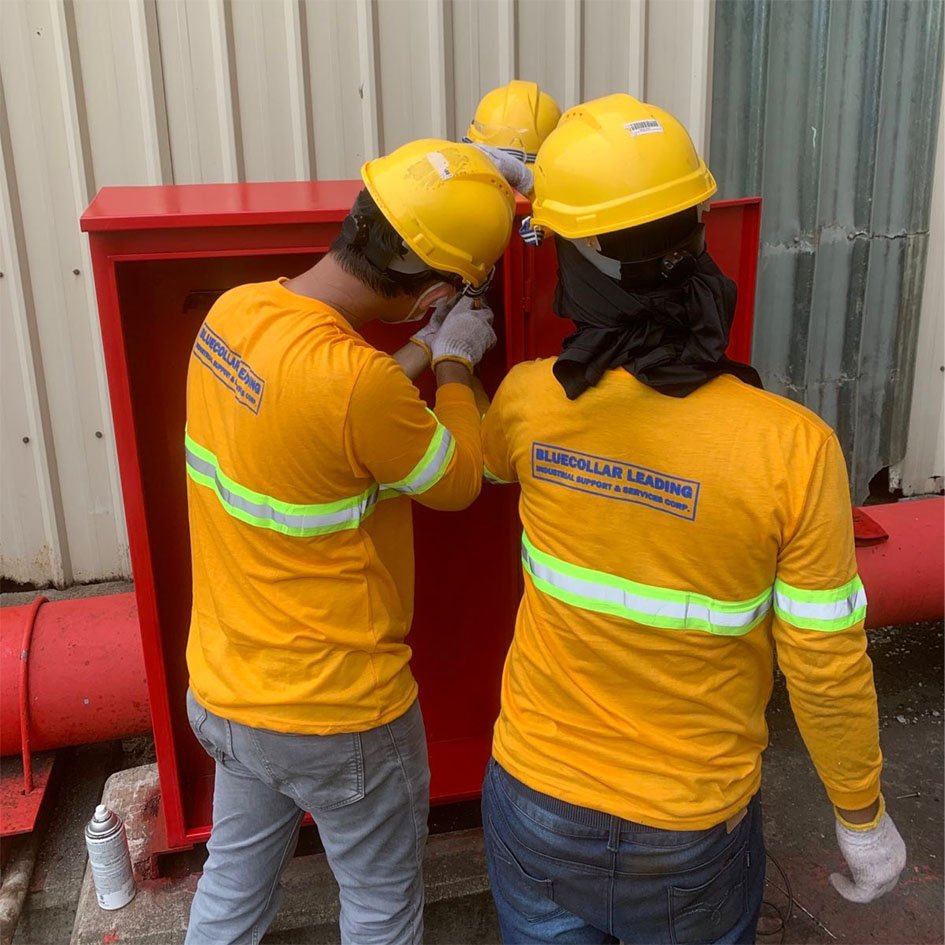Firehose Box Installation

Firehose boxes, also known as fire alarm call boxes or fire call boxes, are typically outdoor emergency communication devices used to alert the fire department or emergency services in case of a fire or other emergencies. While the design and fabrication of firehouse boxes may vary, here’s a general outline of the components and considerations:
Materials and Tools:
- Metal Sheets:
- Choose a durable and weather-resistant material such as stainless steel or aluminum for the main body.
- Thickness will depend on the desired strength and durability.
- Welding Equipment:
- MIG, TIG, or stick welding machines depending on your preference and expertise.
- Safety gear, including welding helmet, gloves, and protective clothing.
- Cutting Tools:
- Angle grinder with cutting discs for cutting metal sheets.
- Plasma cutter or metal shears for precision cuts.
- Measuring and Marking Tools:
- Tape measure, ruler, or calipers for accurate measurements.
- Marking tools such as a scribe or soapstone.
- Fasteners:
- Nuts, bolts, and washers for assembling different parts.
- Hinges for doors, if applicable.
- Sealing and Weatherproofing:
- Silicone sealant or gaskets to ensure the box is weather-resistant.
Steps:
- Design:
- Create a detailed design, including dimensions and specifications for the firehouse box.
- Ensure the design complies with any local regulations or standards.
- Cutting:
- Cut the metal sheets according to the design using the cutting tools.
- Pay attention to accuracy and precision, especially for door openings and any vents.
- Welding:
- Assemble the cut pieces using welding equipment.
- Weld all seams securely to ensure the box’s structural integrity.
- Doors and Openings:
- If your design includes doors, attach hinges securely.
- Ensure that doors are properly aligned and can be securely closed and locked.
- Ventilation:
- If your design includes ventilation openings, ensure they are appropriately sized and located to facilitate air circulation.
- Fastening:
- Securely fasten all components using nuts, bolts, and washers.
- Double-check the tightness of fasteners to avoid any structural issues.
- Sealing:
- Apply silicone sealant or install gaskets to seal joints and prevent water ingress.
- Ensure the box is weatherproof to protect its contents.
- Finishing Touches:
- Remove any sharp edges or burrs with a grinder.
- Consider painting or coating the box for additional protection against corrosion.
- Quality Check:
- Conduct a thorough quality check to ensure the firehouse box meets the design specifications and safety standards.
- Installation:
- Install the firehouse box in its designated location, ensuring it is securely anchored.
Always consult local building codes and regulations when designing and fabricating fire safety equipment to ensure compliance and safety. If you are not experienced with metal fabrication, consider seeking the assistance of a professional fabricator or engineer.
